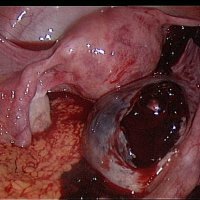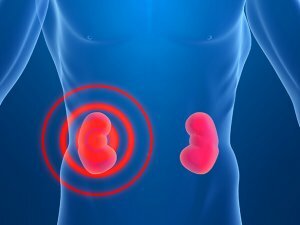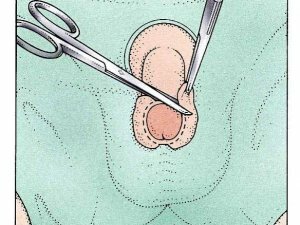Apoplexy of the right ovary

Ovarian apoplexy is a bleeding in the ovary or abdominal cavity. It occurs because of rupture of the follicle vessels, follicular cyst or cyst of the yellow body.
Difference between the right and left ovary
At first glance it may seem that the right and left ovaries are absolutely no different. But experts argue that the disease of apoplexy of the right ovary is much more common than the left one. This is because the blood supply of the right ovary is greater than the left one. The right ovary leaves the artery directly from the aorta, and to the left of the kidneys.
Causes of apoplexy of the right ovary
Despite some differences in the ovaries, the symptoms and their treatment are still the same. Apoplexy of the ovary can occur at any age up to 50 years. The incidence of women with this disease is 3% per cent. A relapse of this disease occurs in 69%.
Apoplexy has many reasons for its appearance. They are caused by cyclic changes in the blood supply of the small pelvis. Usually apoplexy manifests itself in the middle and in the second phase of the menstrual cycle. This is due to the filling of the ovarian vessels with blood before menstruation or during ovulation.
Ovarian apoplexy arises from the inflammatory process that occurs in the pelvic department, and also because of the varicose veins of the ovaries. If a woman has any, or a disease associated with blood, and she is taking anticoagulants, this can affect the coagulability of the blood. Specific causes of the disease can be horse riding, exercise, brutal sexual intercourse, douching. Those causes that do not depend on you, there is an incorrect structure of the uterus, adhesive processes, pressure on the ovary tumor and other features of the structure of female organs. And there are cases where there are absolutely no prerequisites for rupturing the ovary, but it still happens, even in a calm state.
Every woman should remember her moral health and the health of the nervous system. Which can also lead to diseases of the ovaries.
Symptoms and Diagnosis of Ovarian Apoplexy
The first thing a woman feels that has had an ovarian apoplexy is a pain in the lower abdomen. It is caused by spasm of the ovarian artery and hemorrhage into the abdominal cavity. Due to loss of blood, a woman feels weak, nauseous, dizzy and even fainting.
There are also cases without hemorrhage into the abdominal cavity. They are called a painful form of rupture of the ovary. The patient will also experience pain and nausea, but the blood will not enter the abdominal cavity, but into the tissue of the follicle or the yellow body.
There is also a hemorrhagic form of apoplexy. During it, there is a hemorrhage in the abdominal cavity, the woman experiences pains in the lower abdomen, which often pass into the anus, the leg external genital organs. The same weakness and dizziness accompany this form of apoplexy.
When studying the blood test of the patient, a decrease in hemoglobin and a slight increase in white blood cells are detected. On examination of ultrasound, uneven blood clots in the abdominal cavity are seen.
Treatment of apoplexy of the right ovary
Treatment depends on the severity of organ damage. If severe bleeding occurs, physicians should resort to surgery. If the injuries were not particularly severe, doctors take a conservative form of treatment. Conservative treatment should take place under the supervision of specialists and in a 24-hour hospital, to avoid repeated problems.
The treatment should include antispasmodics, hemostatic action, vitamins, a warmer on the lower abdomen and physiotherapy procedures.
Prevention of recurrence of ovarian apoplexy
In order that you do not have recurrences of ovarian apoplexy, you need to follow some recommendations. For women who undergo such a disease, drug therapy is indicated that will help resolve the problem with ovarian diseases. To restore the hormonal background, it is recommended that women undergo an estrogen-progestin oral contraceptive course, within 3-6 months.
Forecasts for recovery
In women with minor injuries, the disease recedes soon. If properly treated and take preventive measures, the chances of a recurrence are reduced to a minimum.



